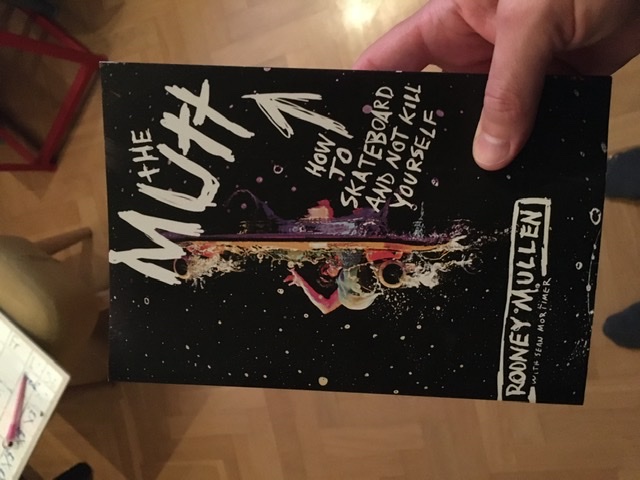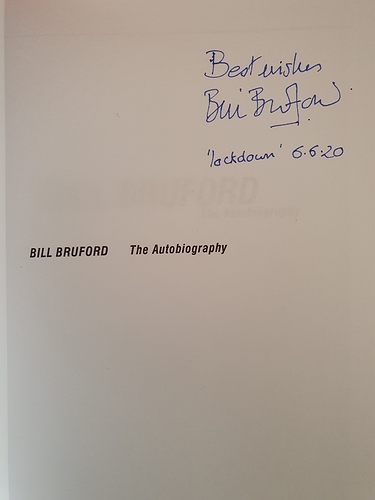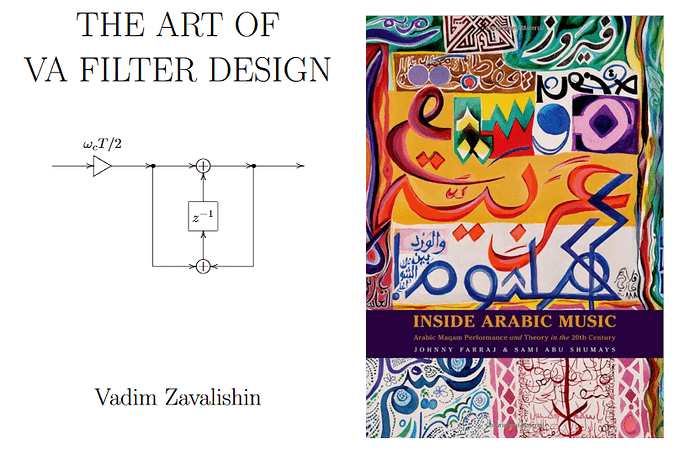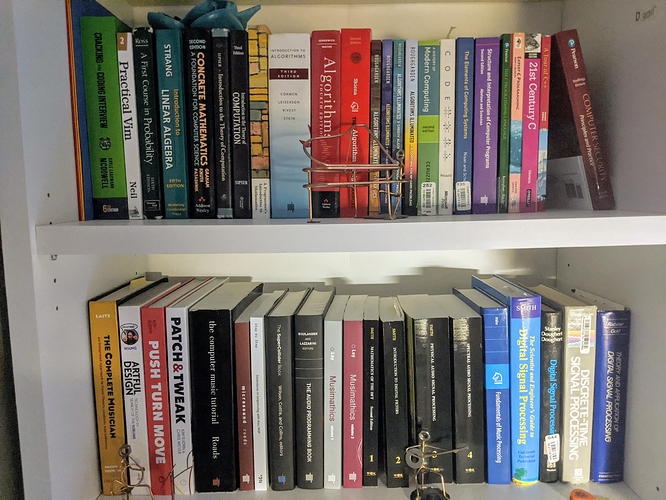btw, I’m reading the EMS Synthi f’n manual and the educational book. I really like the way everything is explained…and I have almost finished to replicate it on VcvRack…I’m also going to recreate the matrix using the pads of the beatstep pro 
Sharing the patch ?
why not, as soon as I finish it! my roadmap says “later”  I am very busy these days.
I am very busy these days.
I have seen that @Deev and @VCVRackIdeas have already done it. I have not looked at their projects, so expect something to be wrong from mine…I am doing it just for fun 
No problem 
done!

Très beau travail, @ale47p 
Haruki Murakami’s Hard-Boiled Wonderland and the End of the World (1985)

I’m about 1/3 of the way through it and am still not quite sure what the story is. So far, 1Q84 is my favourite by him.
thank you Marc, but the only thing I know in french is something like “je ne parlais pas francais” or something similar 
That looks very cool. I have a friend who’s suffering creatively because of COVID. He was rehearsing music he’d written for a fourteen piece band, then as he puts it, “nothin’”. All his gigs are done for now too. Did you find it worthwhile?
Yeah it’s an interesting read and quite inspirational. I still haven’t finished it yet but there is a lot about how they got into music, how jazz developed, how they became Buddhists, and how jazz is similar in nature to Buddhism (or at least this particular branch). I would definitely recommend it, if it’s not inspirational in a musical sense it probably will be in a spiritual sense.
Filter book good?
One of the funniest books I’ve read in my life.
Re-reading Rick Taube’s superb book on algorithmic composition.
Rearranged my bookshelf! Here’s most of the computer + music stuff (not showing the shelves of sheet music and theory books and other things I like to read)…
Currently reading some not-pictured Andy Weir short stories for my weekly book club. We’ve been doing short stories since the beginning of March, and the consistency of it has been reassuring in these crazy months!
Six months ago I stopped having to do the work commute where I would read every day for an hour on the bus and since then I’ve not read a single ‘proper’ book, though I’ve regressed into childhood by signing up to Marvel Unlimited for a year and I’ve read hundreds of comics. The last book I was reading and haven’t yet finished was The Three-Body Problem which was pretty average though I probably missed a load of deeper references you’d have to be Chinese to pick up on.
Interviews to Coil. They could make you puke, question your own worldviews, lead you to enlightenment or simply amuse you with their easy-going misuse of all sorts of equipment.
Coil’s music has some decidedly down-to-earth aspects – namely, the hardware Christopherson uses. “Apart from the guitars and brass instruments and some live strings mixed with Fairlight III strings, everything else on Horse Rotorvator is artificial,” he notes. “Quite a lot of those sounds were created using an [Emu Systems] Emulator II function to destroy the original sample and produce something else. I used the VCAs and VCFs to do real-time modulation of the original sample.” The Emulator II also played a starring role in the songwriting. “The initial sequences consisted of multi-tracked sample combinations done on the Emulator,” he explains. “In most cases, what I did was download those sequences into a Fairlight by means of the MIDI output. You can edit much more easily on a Fairlight than on an Emulator.” To avoid the android stiffness of sequence-based songwriting, Christopherson and company “try and con the machines into doing what we want, even though sometimes the machines weren’t even designed to do that.” For Horse Rotorvator, the conned machines include a Fairlight II and III for sequencing and editing, Emulator II as the main sound generator, Yamaha DX7, PPG Wave 2.2, and an EMS Synthi for the heavy, distorted sounds. “The Synthi,” Christopherson says, “was like a portable version of their VCS-3 from '72. it has a collection of VCAs and ring modulators. The way you connect the oscillators and filters is via a matrix board, where you put pins in to make the connections.” Additional artillery included "a few old Woolworth’s-type flangers and distortion pedals. But don’t be fooled by all the bits and bytes. Coil are not master musicians. “I can’t really play properly,” Christopherson asserts blithely. “None of us can really play in the conventional sense.”



